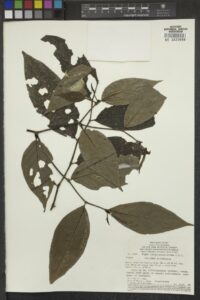Piper carniconnectivum

Please note: There doesn’t seem to be a documented plant species with the name "Piper carniconnectivum." It’s possible this is a misspelling, a fictional name, or a very newly discovered species.
However, I can offer some general advice on propagating plants in the Piper genus, which includes popular varieties like black pepper.
Growing Your Own Pepper Powerhouse: Propagating Piper Plants
The Piper genus boasts thousands of species, many recognized for their aromatic and culinary uses. But did you know that growing your own pepper plant is easier than you might think? Let’s explore the world of Piper propagation and unlock the secrets to expanding your spicy plant family.
Understanding Your Options
Piper plants offer several propagation methods, each with its own advantages:
-
Seed Propagation: Starting from seed offers a rewarding experience but may require patience. Purchase seeds from reputable sources to ensure viability.
- Process: Sow seeds in a well-draining seed starting mix, keeping them consistently moist and warm (around 70-75°F). Germination can take several weeks.
- Pros: Cost-effective, wide variety available.
- Cons: Longer germination time, plant traits may vary.
-
Stem Cuttings: One of the most popular and reliable methods for Piper propagation is using stem cuttings.
- Process: Take 4-6 inch cuttings from healthy, mature stems. Remove lower leaves and dip the cut end in rooting hormone (optional but helpful). Place cuttings in a moist rooting medium like perlite or vermiculite.
- Pros: Relatively quick results, produces a clone of the parent plant.
- Cons: Requires access to a healthy parent plant.
- Layering: Air layering is another effective technique for some Piper species.
- Process: Wound a healthy stem slightly and enclose it in moist sphagnum moss. Wrap the moss with plastic wrap to retain moisture. Roots should form in a few weeks, at which point you can sever the layered section and pot it up.
- Pros: High success rate, less disruptive to the parent plant.
- Cons: Can be more time-consuming than cuttings.
Creating the Ideal Environment
- Light: Piper plants thrive in bright, indirect sunlight. Avoid harsh, direct sunlight that can scorch their leaves.
- Water: Maintain consistently moist but not waterlogged soil. Allow the top inch of soil to dry slightly between waterings.
- Humidity: These tropical plants appreciate higher humidity levels. Misting regularly or using a pebble tray can help create a more humid environment.
- Soil: Use a well-draining potting mix rich in organic matter. A slightly acidic to neutral pH is ideal (around 6.0-7.0).
Patience Is Key
Propagation takes time, and some methods may require more patience than others. Don’t be discouraged if you don’t see immediate results. Monitor your cuttings or seedlings closely, ensuring they receive proper care and a suitable environment.
Enjoy the Fruits (and Leaves) of Your Labor
Successfully propagating your own Piper plants is a rewarding experience. Not only will you enjoy the satisfaction of growing your own, but you’ll also have a fresh supply of flavorful leaves or peppercorns to enhance your culinary creations.